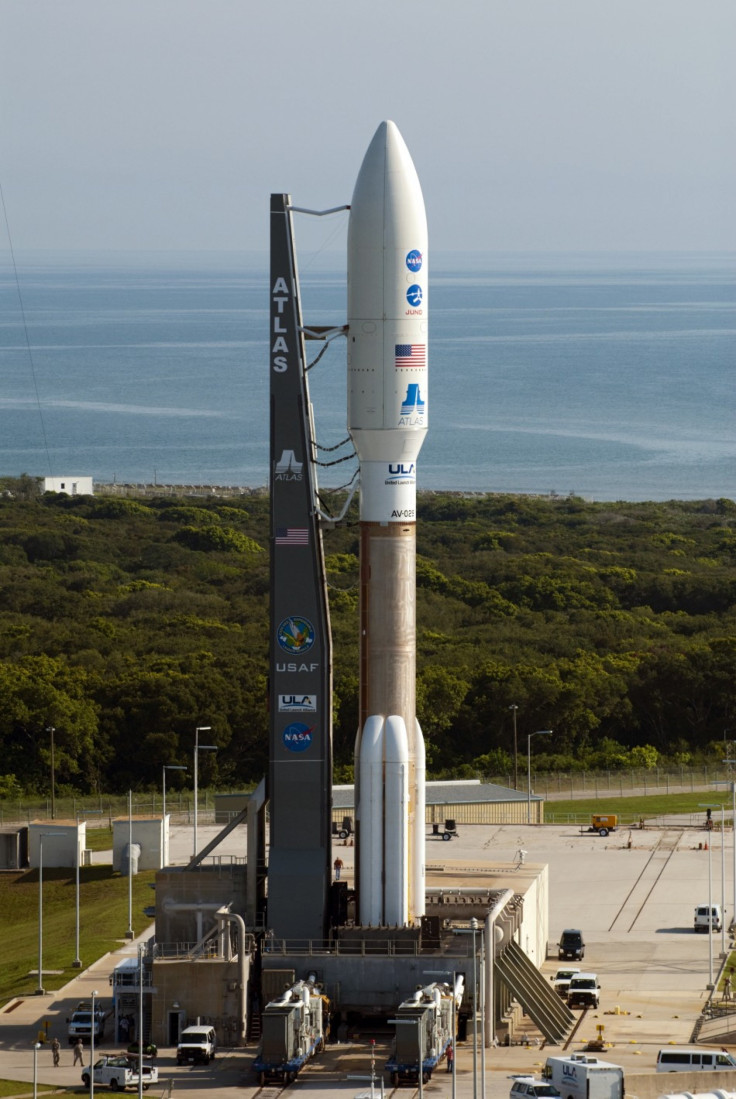Juno Spacecraft to Lift-Off Today to Unlock Secrets of Jupiter

NASA is on the brim of launching a new solar-powered Juno spacecraft all the way to Jupiter. Juno is set to lift-off at 11:34 am Friday from Space Launch Complex 41 at Cape Canaveral Air Force Station in Florida, atop an Atlas V rocket.
It will take five years for the 4-ton spacecraft to reach the largest planet in our solar system, Jupiter. The spacecraft's journey will be helped by a United Launch Alliance Atlas V equipped with five solid-fueled boosters.
The spacecraft will travel over 716 million kilometers (445 million miles) and will travel faster than 16,000 kilometres per hour (9,900 mph) (4.4 km/s) to reach the planet.
The Juno project cost about $1.1 billion total, consisting about of $581 million spacecraft development and science instruments; $184 million launch services; $342 million mission operations, science processing and relay support for 6 years.
The spacecraft will orbit Jupiter 33 times during one Earth year. Juno's trajectory will use a gravity assist speed boost from Earth, accomplished through an Earth flyby two years after its August 5 launch.
Jupiter’s orbit is five times farther from the Sun than Earth's, so the giant planet receives 25 times less sunlight than Earth. It is believed that Jupiter is the oldest planet in the solar system. Jupiter has no solid surface, instead its hydrogen and helium dominated atmosphere grows steadily denser with depth.
Astronomers hope to know how planets are made by finding what lies beneath the surface of the mysterious gas giant.
Juno, which is the first spacecraft adorned with three huge solar panels to go beyond the asteroid belt between Mars and Jupiter, will spend at least one year circling Jupiter's poles.
Juno, with three huge solar panels, will look deep beneath the planet's swirling curtain of clouds to find out what lies beneath. "This might confirm theories about how the solar system formed, or it may change everything we thought we knew," NASA said in a statement.
"Juno only has a 22-day launch window, or else we're down for another 13 months until our next opportunity," said John Calvert, mission manager for Juno. "So it's those kinds of challenges with making sure you do all the little things necessary to maximize the opportunities you get for those 22 days."
The spacecraft carries precise, high-sensitivity radiometers, magnetometers, and gravity science systems. Juno's 32 polar orbits extensively sample Jupiter's full range of latitudes and longitudes.
From its polar perspective, Juno combines in-situ and remote sensing observations to explore the polar magnetosphere and determine the composition and phenomena of Jupiter's auroras.
The 8,000-pound solar-powered probe will deploy eight scientific instruments to determine how much water Jupiter holds, a key factor in finding out how the planet was formed. The Juno mission is part of the New Frontiers Program managed at NASA's Marshall Space Flight Center in Huntsville, Alabama.
If the planet was formed roughly where it is positioned today, NASA scientists expect Jupiter to hold nine times more water than the sun. But if the planet was formed farther out in the solar system, the amount of water might be three times more than solar levels as it would be colder.
This will help scientists to determine how other planets in our solar system ended up in the current positions. Juno will be clothed with a stronger body -- the probe will be layered with titanium -- than its predecessor Galileo but it is expected not to survive more than a year due to Jupiter's harsh radioactive environment.
Juno will make a suicidal plunge into Jupiter's atmosphere at the end of its life span, to avoid possible contamination of the planet's potentially life-bearing moons.
With Juno on its way, the Launch Services Program team is looking at the moon as it prepares the GRAIL mission for launch in September. Following that, the next mission beyond Earth also is being prepared at Kennedy as teams ready the roving Mars Science Laboratory "Curiosity" for liftoff in late November.
© Copyright IBTimes 2024. All rights reserved.





















